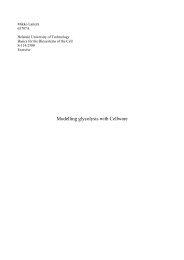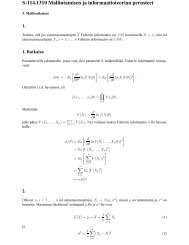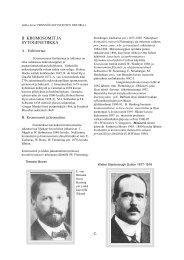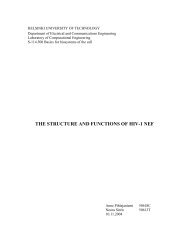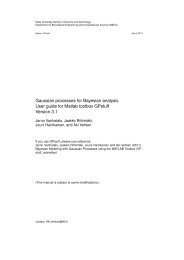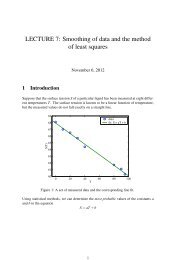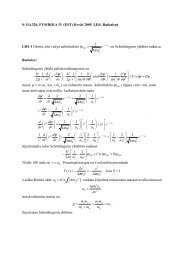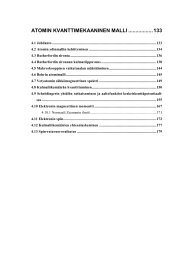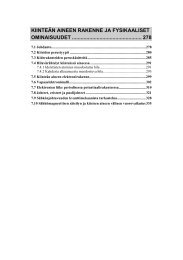LECTURE 3: Polynomial interpolation and numerical differentiation
LECTURE 3: Polynomial interpolation and numerical differentiation
LECTURE 3: Polynomial interpolation and numerical differentiation
You also want an ePaper? Increase the reach of your titles
YUMPU automatically turns print PDFs into web optimized ePapers that Google loves.
Using the recursive formula, we can now construct a divided-differences table for a function<br />
f<br />
x f[] f[, ] f[, , ] f[, , , ]<br />
x 0 f[x 0 ]<br />
f[x 0 ,x 1 ]<br />
x 1 f[x 1 ] f[x 0 ,x 1 ,x 2 ]<br />
f[x 1 ,x 2 ] f[x 0 ,x 1 ,x 2 ,x 3 ]<br />
x 2 f[x 2 ] f[x 1 ,x 2 ,x 3 ]<br />
f[x 2 ,x 3 ]<br />
x 3 f[x 3 ]<br />
Example.<br />
Construct a divided differences table <strong>and</strong> write out the Newton form of the interpolating<br />
polynomial for the following table of values:<br />
x i 1 3/2 0 3<br />
f(x i ) 3 13/4 3 5/3<br />
Step 1.<br />
The second column of entries is given by f[x i ]= f(x i ). Thus<br />
x f[] f[, ] f[, , ] f[, , , ]<br />
1 3<br />
f[x 0 ,x 1 ]<br />
3/2 13/4 f[x 0 ,x 1 ,x 2 ]<br />
f[x 1 ,x 2 ] f[x 0 ,x 1 ,x 2 ,x 3 ]<br />
0 3 f[x 1 ,x 2 ,x 3 ]<br />
f[x 2 ,x 3 ]<br />
2 5/3<br />
Step 2.<br />
The third column of entries is obtained using the values in the second column:<br />
f[x i ,x i+1 ]= f[x i+1]− f[x i ]<br />
x i+1 − x i<br />
For example,<br />
f[x 0 ,x 1 ]= f[x 1]− f[x 0 ]<br />
x 1 − x 0<br />
= 13/4−3<br />
3/2−1 = 1 2




